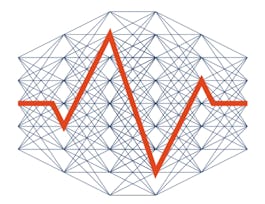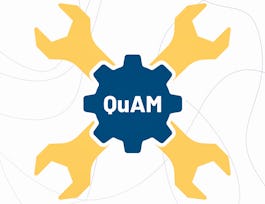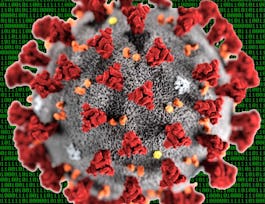This course is a follow up course to "Researcher's Guide to Fundamentals of Omic Data" which dives into further detail about DNA informatics methods!



Researcher's guide to DNA sequencing data
This course is part of Researcher's Guide to Omic Data Specialization

Instructor: Candace Savonen, MS
Sponsored by Louisiana Workforce Commission
Recommended experience
What you'll learn
You will be able to understand the goals and general workflows of DNA based methods and know tools and resources you should consider.
Details to know

Add to your LinkedIn profile
13 assignments
See how employees at top companies are mastering in-demand skills

Build your subject-matter expertise
- Learn new concepts from industry experts
- Gain a foundational understanding of a subject or tool
- Develop job-relevant skills with hands-on projects
- Earn a shareable career certificate


Earn a career certificate
Add this credential to your LinkedIn profile, resume, or CV
Share it on social media and in your performance review

There are 7 modules in this course
In this module we discuss what this course covers and encourage you to make your own goals for what you'd like to learn. Then we start with some generalities about DNA focused methods.
What's included
3 videos3 readings2 assignments1 discussion prompt
In this module we cover the details of whole genome sequencing and whole exome sequencing. We compare and contrast the methods and discuss what kinds of questions these data types might answer.
What's included
2 readings2 assignments1 discussion prompt
In this section we dive into DNA methylation sequencing methods, also known more specifically as bisulfite sequencing.
What's included
2 readings2 assignments1 discussion prompt
In this section we cover the basics of chromatin evaluation methods. We contrast and compare chromatin sequencing methods.
What's included
1 video2 readings2 assignments1 discussion prompt
In this module, we discuss details of the different ways chromatin can be assessed. We go through the basics of ATAC-seq, and scRNA-seq.
What's included
2 videos3 readings2 assignments
In this section we cover the basics of ChIP-seq and CUT & Tag and CUT & RUN.
What's included
1 video4 readings2 assignments
In this section, In this module we discuss when microarrays should be used for assaying DNA instead of sequencing methods. and then we will wrap up this course with a final quiz to assess your absorption of the material. We also point you to our Tool Glossary that has a list of tools you may want to consider for your next steps of your DNA omics study.
What's included
3 readings1 assignment2 discussion prompts
Instructor

Offered by
Why people choose Coursera for their career




Recommended if you're interested in Data Science

University of Illinois Urbana-Champaign

Fred Hutchinson Cancer Center

Alberta Machine Intelligence Institute

University of California San Diego

Open new doors with Coursera Plus
Unlimited access to 10,000+ world-class courses, hands-on projects, and job-ready certificate programs - all included in your subscription
Advance your career with an online degree
Earn a degree from world-class universities - 100% online
Join over 3,400 global companies that choose Coursera for Business
Upskill your employees to excel in the digital economy


